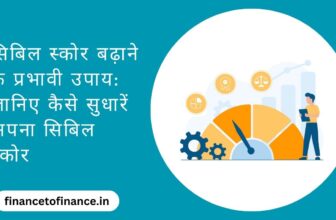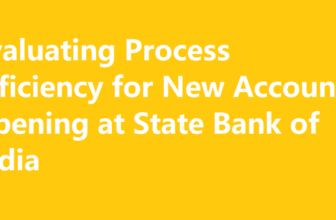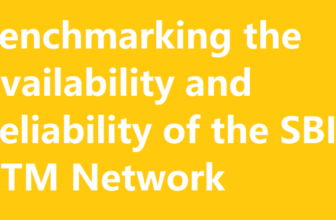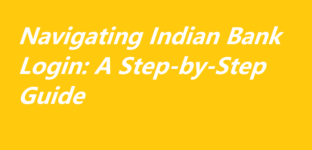
Navigating Indian Bank Login: A Step-by-Step Guide
In the contemporary digital era, online banking plays a pivotal role in the financial landscape. It offers unparalleled convenience, accessibility, and the ability to manage one’s finances from the comfort of home or on the go.
This comprehensive guide aims to empower individuals by providing a detailed and step-by-step walkthrough of the Indian Bank Login process. Our goal is to ensure a smooth and secure online banking experience for users.
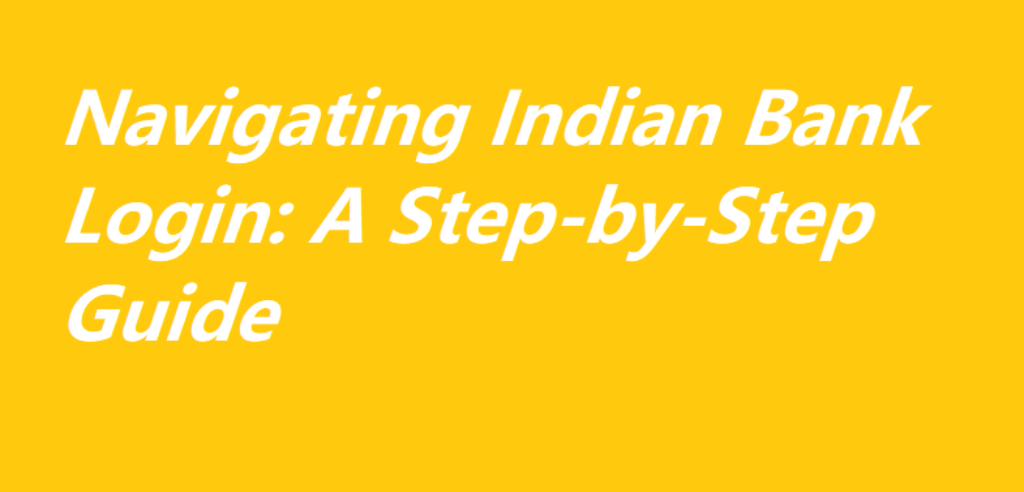
Throughout this guide, we will demystify the Indian Bank Login process, covering everything from the initial registration to conducting transactions and ensuring the utmost security for your account.
Preparing for Indian Bank Login
Gathering Necessary Information
1. Account Number – Your account number is a unique identifier linked to your bank account. It can usually be found on your account statements or obtained from your bank branch.
2. Personal Identification – The Indian Bank may require various forms of identification, such as an Aadhar card, PAN card, or passport, to verify your identity during the registration process.
3. Registered Mobile Number and Email – It is imperative to maintain updated contact information with Indian Bank to receive OTPs (One-Time Passwords) and essential account-related notifications.
Ensuring a Secure Internet Connection
Before logging into your account, ensure that you are connected to a secure and private internet network, preferably a trusted Wi-Fi network or mobile data, to protect your sensitive information from potential threats.
Device Compatibility
Verify that the device you intend to use for online banking is compatible with Indian Bank’s website or mobile app. It is advisable to use the latest version of a supported web browser or to download the official mobile app from a trusted source.
Accessing the Indian Bank Login Portal
Visiting the Official Website
To access Indian Bank’s online banking services, open your web browser and navigate to the official Indian Bank website at www.indianbank.in.
Mobile App Installation (if applicable)
If you prefer mobile banking, you can download and install the Indian Bank mobile app from your device’s app store, such as the Google Play Store for Android or the Apple App Store for iOS.
Alternative Access Options
Some users may find alternative access methods, such as SMS banking or phone banking, more suitable. Indian Bank offers these options, and users can inquire about them if needed.
Registration Process
Creating an Account (for new users)
1. Providing Personal Information – During the registration process, you will be required to input personal information, including your name, date of birth, and contact details.
2. Setting Up Security Questions – Strengthen the security of your account by setting up personalized security questions that only you can answer.
KYC Verification
The Know Your Customer (KYC) verification process is a crucial step in ensuring the security of your Indian Bank account. This may involve visiting a bank branch or utilizing e-KYC methods to verify your identity.
Username and Password Setup
1. Strong Password Guidelines – Enhance your account’s security by creating a robust and unique password. Follow password guidelines, such as using a combination of uppercase and lowercase letters, numbers, and special characters.
2. Two-Factor Authentication (2FA) – Whenever available, enable Two-Factor Authentication (2FA) to add an extra layer of security. 2FA requires a one-time code from your mobile device during the Indian Bank Login process.
Logging into Your Indian Bank Account
Entering Your Username and Password
To access your account, visit the Indian Bank Login page and carefully input your username and password.
Navigating the Security Challenges (CAPTCHA, OTP, etc.)
Be prepared to complete security challenges such as CAPTCHAs or enter OTPs sent to your registered mobile number or email.
Troubleshooting Login Issues
In case you encounter login issues, follow the bank’s guidelines for troubleshooting, which may include resetting your password or contacting customer support.
Exploring Your Indian Bank Account
Overview of Dashboard
After logging in, your account dashboard will provide you with an overview of your account balances and recent transactions.
Checking Account Information
For detailed information about your checking account, including balances and transaction history, navigate to the “Accounts” section.
Viewing Savings, Fixed Deposits, and Other Accounts
Access information regarding other accounts you hold with Indian Bank, such as savings accounts or fixed deposits.
Transaction History
Keep track of your financial activity over time by reviewing your transaction history.
Managing Your Profile
Ensure that your personal information, contact details, and preferences are up to date by accessing the profile management options.
Making Transactions
Fund Transfers
1. Within Indian Bank Accounts – Transfer funds between your Indian Bank accounts by selecting the “Fund Transfer” or “Transfer Money” option and following the on-screen instructions.
2. To Other Bank Accounts – For transfers to accounts in other banks, utilize the “NEFT” or “RTGS” option, providing the recipient’s account details and following the necessary steps.
Bill Payments
1. Utility Bills – Simplify bill payments, such as electricity, water, or gas bills, through the “Bill Payments” section. Add payees and set up recurring payments as needed.
2. Credit Card Payments – Conveniently make credit card payments directly through the online banking portal by linking your credit card account.
Mobile Recharge
Recharge your mobile phone or pay for prepaid services through the “Mobile Recharge” option by entering the mobile number and selecting the desired recharge amount.
Standing Instructions
Automate recurring payments, such as monthly rent or loan EMI payments, by setting up standing instructions for hassle-free financial management.
Security Measures
Two-Factor Authentication (2FA) Importance
Emphasize the critical role of 2FA in fortifying the security of online banking activities.
Secure Password Practices
Encourage users to follow secure password practices, including the use of a combination of uppercase and lowercase letters, numbers, and special characters.
Tips for Safe Usage
Provide valuable tips for safe online banking, such as the importance of logging out after each session, avoiding the use of public computers, and maintaining vigilance against phishing attempts.
Recognizing Phishing Attempts
Educate readers on how to identify and thwart phishing scams while providing examples of common phishing tactics employed by cybercriminals.
Troubleshooting and Support
Common Login Issues
1. Forgotten Password – In case you forget your password, utilize the “Forgot Password” link on the login page. This may involve answering security questions or receiving a password reset link via email.
2. Account Lockouts – Explain the causes of account lockouts and offer guidance on unlocking your account by reaching out to customer support or following specific instructions.
Contacting Customer Support
1. Helpline – Provide users with the customer support helpline number to call if they encounter issues or require assistance.
2. Email Support – Explain how to initiate contact with customer support via email, including the expected response time.
3. Visiting a Local Branch – Suggest visiting a nearby bank branch for in-person assistance with complex issues or inquiries.
Tips for a Secure Indian Bank Login
Regular Password Updates
Emphasize the importance of periodically changing passwords to bolster security.
Avoiding Public Wi-Fi for Banking
Highlight the risks associated with using public Wi-Fi networks for online banking and recommend the use of secure and private networks.
Monitoring Account Activity
Encourage users to vigilantly review their transaction history and account statements to promptly detect any unauthorized or suspicious activity.
Logging Out Securely
Stress the significance of securely logging out after each Indian Bank Login session to prevent unauthorized access.
Conclusion
Summarize the key steps and concepts covered in this guide, underlining their significance. Reiterate the delicate balance between security and convenience in online banking, reminding users that while convenience is essential, safeguarding their financial information is paramount.
Encourage readers to utilize the knowledge gained from this guide to ensure a safe and seamless Indian Bank Login experience. By doing so, users will attain greater financial control and enjoy peace of mind.
Also read,
How to Use the Axis Bank Balance Check Number for Hassle-Free Banking



